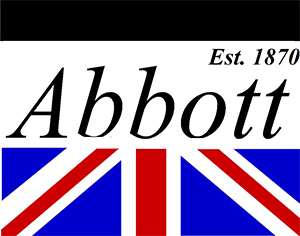ASME Pressure Vessels – American Society of Mechanical Engineers
We manufacture ASME Pressure Vessels in accordance American Society of Mechanical Engineers standard. We can also now, after a two-day audit at our factory with the ASME US-based inspection team and with support from our colleagues at British Engineering Services, provide vessels with a U-stamp to be sent to the USA and Canada. To read more about this see our blog.
Please email your requirements or complete our pressure vessel enquiry forms – for ASME Pressure Vessels or Air Receivers
INTRODUCTION
This ASME Pressure Vessel Code covers rules for construction of power boilers,
- electric boilers,
- miniature boilers,
- and high-temperature water boilers
- to be used in stationary service and includes those power boilers used in locomotive, portable, and traction service. Reference to a paragraph includes all the subparagraphs and subdivisions under that paragraph.
The Code does not contain rules to cover all details of design and construction of pressure vessels. Where complete details are not given, it is intended that the manufacturer, subject to the acceptance of the Authorized Inspector, shall provide details of design and construction which will be as safe as otherwise provided by the rules in the Code. The scope of jurisdiction of Section I applies to the boiler proper and to the boiler external piping.
Superheaters, economizers, and other pressure parts connected directly to the boiler without intervening valves shall be considered as parts of the boiler proper, and their construction shall conform to Section I rules. Boiler external piping shall be considered as that piping which begins where the boiler proper or separately fired superheater terminates at:
- the first circumferential joint for welding end connections; or
- the face of the first flange in bolted flanged connections; or
- the first threaded joint in that type of connection; and which extends up to and including the valve or valves required by this Code.
ASME Code Certification (including Data Forms and Code Symbol Stamping) and/or inspection by the Authorized Inspector, when required by this Code, is required for the boiler proper and the boiler external piping. Construction rules for materials, design, fabrication, installation, and testing of the boiler external piping are:
- Power boiler — a boiler in which steam or other vapour is generated at a pressure of more than 15 psi (100 kPa) for use external to itself.
- Electric boiler — a power boiler or a high-temperature water boiler in which the source of heat is electricity.
- Miniature boiler — a power boiler or a high-temperature water boiler in which the limits specified in PMB-2 are not exceeded.
- High-temperature water boiler — a water boiler intended for operation at pressures in excess of 160 psi (1.1 MPa) and/or temperatures in excess of 250°F (120°C).
The material for forced-circulation boilers, boilers with no fixed steam and water line, and high-temperature water boilers shall conform to the requirements of the Code. All other requirements shall also be met except where they relate to special features of construction made necessary in boilers of these types, and to accessories that are manifestly not needed or used in connection with such boilers, such as water gages and water columns.
Reheaters receiving steam which has passed through part of a turbine or other prime mover and separately fired steam superheaters which are not integral with the boiler are considered fired pressure vessels and their construction shall comply with Code requirements for superheaters, including safety devices. Piping between the reheater connections and the turbine or other prime mover is not within the scope of the Code. A pressure vessel in which steam is generated by the application of heat resulting from the combustion of fuel (solid, liquid, or gaseous) shall be classed as a fired steam boiler.
Unfired pressure vessels in which steam is generated shall be classed as unfired steam boilers with the following exceptions:
- vessels known as evaporators or heat exchangers
- vessels in which steam is generated by the use of heat resulting from operation of a processing system containing a number of pressure vessels such as used in the manufacture of chemical and petroleum products
Unfired steam boilers shall be constructed under the provisions of Section I or Section VIII. Expansion tanks required in connection with high-temperature water boilers shall be constructed to the requirements of Section I or Section VIII.
A pressure vessel in which an organic fluid is vapourized by the application of heat resulting from the combustion of fuel (solid, liquid, or gaseous) shall be constructed under the provisions of Section I.
Vessels in which vapour is generated incidental to the operation of a processing system, containing a number of pressure vessels such as used in chemical and petroleum manufacture, are not covered by the rules of Section I.
Other Pressure Vessel design code info. can be found with the links below
PD5500, EN286, DNV, ASME, LLOYDS, 97/23/EC, EN13445, 87/404/EEC, 2009/105/EC, ABS, BS5169
Please email your requirements or complete our pressure vessel enquiry forms – for ASME Pressure Vessels or Air Receivers.

Leave a Reply
Want to join the discussion?Feel free to contribute!